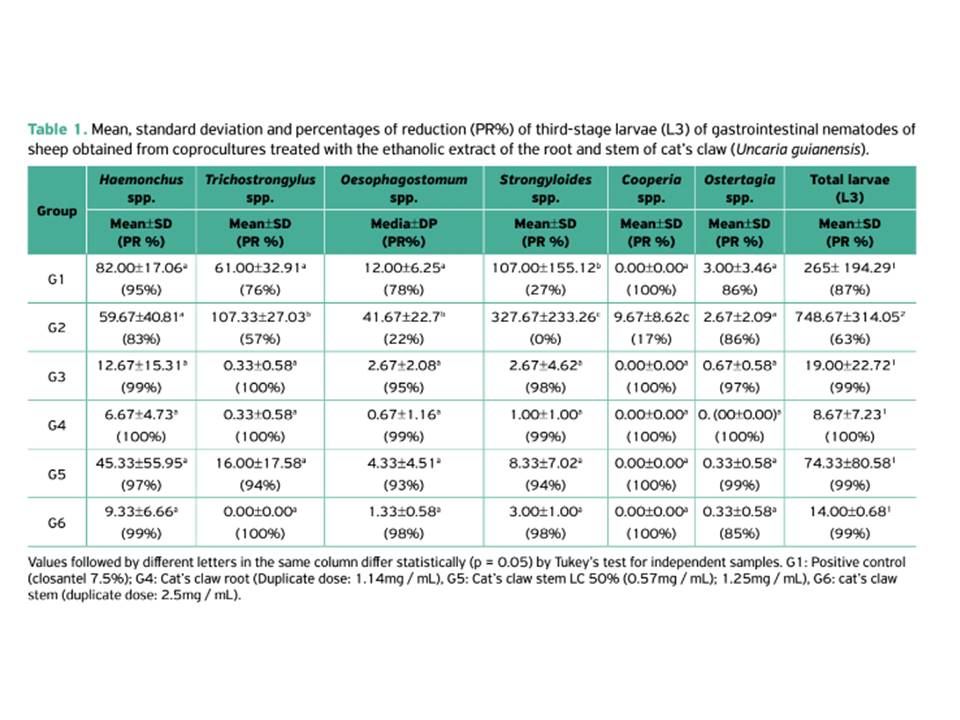Anthelmintic activity of the ethanol extract of the Uncaria guianensis (Rubiaceae) on eggs and larvae of gastrointestinal nematodes of sheep in the Western Amazon Region
DOI:
https://doi.org/10.21708/avb.2021.15.1.9662Abstract
The purpose of this study was to evaluate the anthelmintic effect of the root and stem of Uncaria guianensis on eggs and larvae of gastrointestinal nematodes from naturally infected sheep. The extracts of the root and stem of Uncaria guianensis were applied in different concentrations. The animals were divided into groups of five animals each, where each group received an extract of the plant and a dose / concentration. Ten ml was applied orally on treatment days, in a single dose. Stool samples were collected weekly for parasitological analysis and blood for hematocrit. Regarding the percentage of reduction in the number of eggs per gram of feces, they were found only in the group treated with Uncaria guianensis root at a concentration of 1.14mg / ml and in the chemically treated group, where they obtained a statistically significant reduction , when compared to the other treated groups, presenting 69% and 66% respectively in the reduction percentage. Regarding the number of third stage larvae of gastrointestinal nematodes recovered from sheep, after treatment with Uncaria guianensis observed that the groups treated with closantel, Uncaria guianensis root at a concentration of 1.14mg / ml and the stem of Uncaria guianensis at a concentration of 1.25mg / ml were statistically different from the other treatments, presenting 68%, 68 % and 86% respectively of reduction in the number of larvae. Thus, we conclude that Uncaria guianensis has anthelmintic activity on gastrointestinal nematodes in sheep.
Downloads

Downloads
Pubblicato
Fascicolo
Sezione
Licenza
Autores que publicam na Acta Veterinaria Brasilica concordam com os seguintes termos: a) Autores mantém os direitos autorais e concedem à revista o direito de primeira publicação, com o trabalho simultaneamente licenciado sob a Licença Creative Commons Attribution que permite o compartilhamento do trabalho com reconhecimento da autoria e publicação inicial nesta revista. b) Autores têm autorização para assumir contratos adicionais separadamente, para distribuição não-exclusiva da versão do trabalho publicada nesta revista (ex.: publicar em repositório institucional ou como capítulo de livro), com reconhecimento de autoria e publicação inicial nesta revista. c) Autores têm permissão e são estimulados a publicar e distribuir seu trabalho online (ex.: em repositórios institucionais ou na sua página pessoal) a qualquer ponto antes ou durante o processo editorial, já que isso pode gerar alterações produtivas, bem como aumentar o impacto e a citação do trabalho publicado (Veja O Efeito do Acesso Livre).


 Esta obra está licenciada com uma Licença
Esta obra está licenciada com uma Licença 